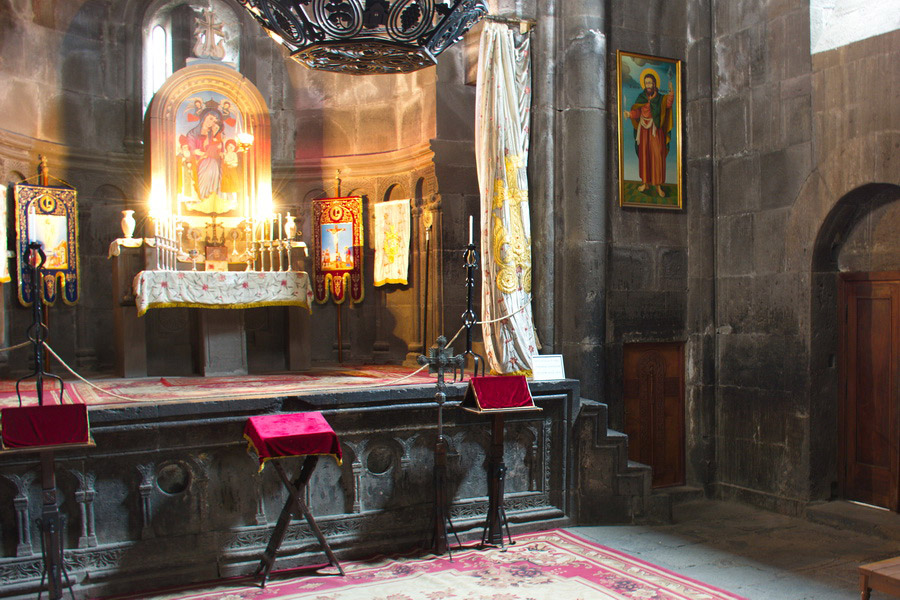
To the middle of the 5th century Armenian Apostolic Church was one of the branches of uniform Christian Church. However, aspiring to strengthen the independence of Byzantium and and refusing to recognize the decisions of the 4th (Khalkidon) Ecumenical Council (451), Armenian Apostolic Church actually separated itself from both Oriental and Roman Catholic Church.
The Armenian Church also differs from the Orthodox, Catholic, and Protestant Churches. Contrary to popular belief, the Armenian Apostolic Church is not monophysite. The Armenian Apostolic Church confesses the perfect humanity in Christ, recognizes Him not only as the true God, but also as the true man, who became like man in all things except sin. However, the Armenian Apostolic Church does not follow all the rituals of the Catholic Church, such as: at baptism, the infant is sprinkled three times and immersed in water three times; anointing is combined with baptism; at the Lord's Supper, only pure, unmixed wine and leavened bread soaked in wine are used.
Armenians also observe fasts strictly, but they have fewer holidays than Orthodox and Catholic churches.
The Catholicos is elected at the synod of Etchmiadzin. Representatives of all dioceses of the Armenian Apostolic Church located throughout the world participate in the secret ballot.
The Catholicos lives in Echmiadzin, where each Armenian should go at least once in his/her life. Armenian archbishops and bishops can be ordained only by the Catholicos. The secular clergy is allowed to marry only once, the second marriage is prohibited.
The related Monophysite churches are Coptic (Egypt), Ethiopian and Jacobit (Syria).

